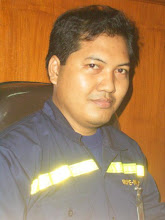 The Ezulwini project involves the recommissioning of an underground uranium and gold mining operation located about 40km southwest of Johannesburg, on the outskirts of the town of Westonaria in Gauteng Province, South Africa. The mine is currently operating on a care and maintenance basis.
The Ezulwini project involves the recommissioning of an underground uranium and gold mining operation located about 40km southwest of Johannesburg, on the outskirts of the town of Westonaria in Gauteng Province, South Africa. The mine is currently operating on a care and maintenance basis.The mine was built in the 1960s and eventually reached production of 200,000tpm. In 2001, production at Ezulwini was halted primarily because of capital constraints compounded by weak gold and uranium prices.
The US$280m project is wholly owned by First Uranium through its local subsidiary Ezulwini Mining Company (Proprietary) Ltd. Existing infrastructure at the site includes two shaft headframes and four hoists, fans, compressors, generators, and underground equipment, as well as the necessary surface freehold required to operate the mine.
The capital expenditure for the project has been raised in three ways: through an IPO in December 2006, a convertible debenture in May 2007 and through proceeds from initial production. Payback is calculated at 5.2 years.
Geology
The project lies within the Witwatersrand Basin, an Archean (about 2.7 billion year-old) sedimentary basin that contains a stratigraphic sequence about 6km thick which consists mainly of quartzites and shales with minor intermittent volcanic units. Gold is hosted by the Upper Elsburg and Middle Elsburg Reefs underlying the mine. Uranium is found only in the Middle Elsburg Reef.
Mineralisation
Gold in the Upper Elsburg is found in the form of native gold and is associated with sulphide minerals, especially various forms of pyrite. Historically, 30-40% of the gold has been recovered by gravity processes, suggesting a high nugget effect.
In the Middle Elsburg Reef, gold is most commonly associated with pyrite, although some gold occurs in small blebs in arsenopyrite and cobaltite. Uranium is found in the form of uraninite. Mineralisation in the Middle Elsburg Reef has less of a nugget effect than the Upper Elsburg Reef.
Resources
At May 2007, there were no mineral reserves as defined by NI 43-101; the total Measured, Indicated and Inferred resources are put at just over 200Mt of about 32Moz contained gold and about 218 million pounds of contained U3O8. Reserves figures and revised resources estimates are expected in mid-2009.
Development
 Part of First Uranium’s plans for developing the Ezulwini project has been to rehabilitate and re-engineer the main mine shaft by installing a floating steel tower, de-stressing the area where the shaft pillar intersects the shaft barrel, and building the uranium and gold processing facilities.
Part of First Uranium’s plans for developing the Ezulwini project has been to rehabilitate and re-engineer the main mine shaft by installing a floating steel tower, de-stressing the area where the shaft pillar intersects the shaft barrel, and building the uranium and gold processing facilities.The company believes the rectification programme will enable the project to reach a production output of about 130,000 tpm by 2009 and 180,000 tpm by 2012, as the Upper Elsburg shaft pillar is developed and the Middle Elsburg uranium and gold section stopes are opened and expanded.
Production
The project is a conventional underground mine with breasting of the Upper and Middle Elsburg reefs. The ore is broken in the stopes and moved by slushers for loading into rail cars for transportation to the shaft. From the shaft and through the balance of the handling, the gold ores and the gold/uranium ores are kept separate. The ores are then hoisted to the surface for processing.
Ezulwini began gold production in July 2008, with uranium recovery starting in October 2008. Gold production is put at about 288,000 ounces a year while the average U3O8 production is expected to reach 2.1 million pounds a year. Full production will be attained in the fourth year and the mine has an expected life of about 19 years.
Processing
 The choice of process is based on those previously used on the site. The ore is crushed and ground, then subjected to gold recovery by gravity and cyanidation. The uranium will be extracted by hot acidic leaching followed by solvent extraction and precipitation to form a concentrate (yellowcake). The uranium tailings will then be leached for gold recovery. Leaching will occur in a carbon in leach (CIL) process, after which gold will be electrowon and refined into doré bars.
The choice of process is based on those previously used on the site. The ore is crushed and ground, then subjected to gold recovery by gravity and cyanidation. The uranium will be extracted by hot acidic leaching followed by solvent extraction and precipitation to form a concentrate (yellowcake). The uranium tailings will then be leached for gold recovery. Leaching will occur in a carbon in leach (CIL) process, after which gold will be electrowon and refined into doré bars.Based on previous operating history, recovery rates of 95.5% for gold and 80% for U3O8 are expected.
Water comes from dewatering the mine, which the company says more than meets its needs.
Power comes partly from South African utility Eskom. In June 2008, Eskom agreed to increase its power commitment to Ezulwini from 40MW to 55MW. But in January 2008, Eskom had said it could not guarantee power supplies, so by July 2008, agreements had been finalised to obtain 10MW diesel generators to supplement the power from Eskom, and secure a steady supply of owner-generated electrical power with a total capacity of 24MW, inclusive of 14MW of existing standby units at the mine.
In September, First Uranium struck an exclusive deal with the Traxys Group to market all Ezulwini uranium.
The EPCM contractor for the project is MDM Engineering, of South Africa. The value of the contract is about US$200m.




No comments:
Post a Comment